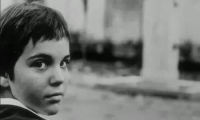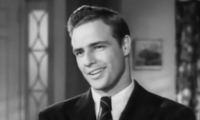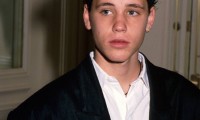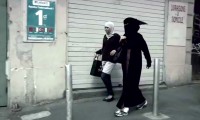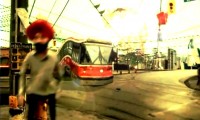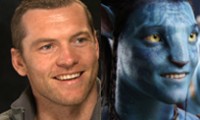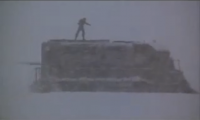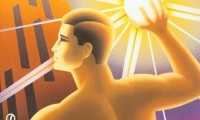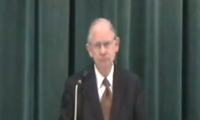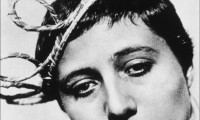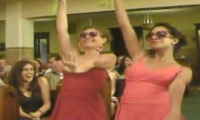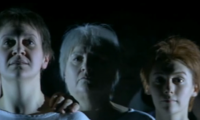There’s a segment in a story by Mary Gaitskill called “Trying To Be,” in which the central character is at a party and everyone keeps asking her if she’s Italian or French. ‘No,’ is her answer, and again, ‘No’, until finally she tells the last one, ‘I’m from Illinois’ and he drops her elbow, turning away in apparent disgust.
Well, the same thing happened to Buster Keaton, only you have to substitute the party (or most of it) for the Silent Era, the last questioner for the advent of talkies, and ‘Illinois’ for the sound that emerged when Buster opened his mouth.
When the audience saw Keaton in his silents, his skin was silk, his eyes were mink, his expression was pure glamour even when he was doing something hilarious. He could have got his portrait taken mid-pratfall for the cover of Vanity Fair. Crop around his face you’d never know he was in flight. Except maybe in this one, a brilliant clip from “The Cameraman,” the last great film he made, harbinger of a simple, mature style that would never come. Here Keaton gets a bit unkempt. Not to mention naked.
Edward Sedgwick, “The Cameraman” (1928)
In all these silent films, he was always showing himself to be a regular guy, a bluffer and a boaster, as eager as any American to keep his eye on the main chance. He played a soda jerk, a boxer, a sailor, a cowboy, a cameraman, a train engineer. So why was everyone surprised when he opened his mouth and out came whisky and cigarettes?
Edward Sedgwick, “Doughboys” (1930)
The answer is, they just were. As far as they were concerned, Buster Keaton ruined his image as soon as he made a sound.
There were other problems too — booze and the encroaching nightmare of script-driven studios. Scripts were the ruination of his method, so this was a chicken-egg dilemma if there ever was one. The booze got so bad that he was sent for a ‘cure’ (to a place where they used to pour liquor down your throat in vast quantities for days on end, trying to learn you to hate it) where he married a nurse and didn’t remember doing it.
But his career wasn’t over over. It was only over until he lost every shred of the youthful aspect of his beauty. He spoke with all his baritone glory in films made close to the end of his life, but still the most iconic appearances remained silent, right up to the end: “Sunset Boulevard,” Canada’s “The Railrodder,” Samuel Beckett’s “Film” (Keaton: ”What I think it means is that a man can keep away from everybody, but he can’t get away from himself”), and this little home movie, filmed in France.
Buster Keaton (Paris, 1960?)
His face had always been sad though. It had that sad look from the beginning. He’d seen people turn away before, he would see them turn away again. He might as well have been from Illinois.
– Sean Dixon
